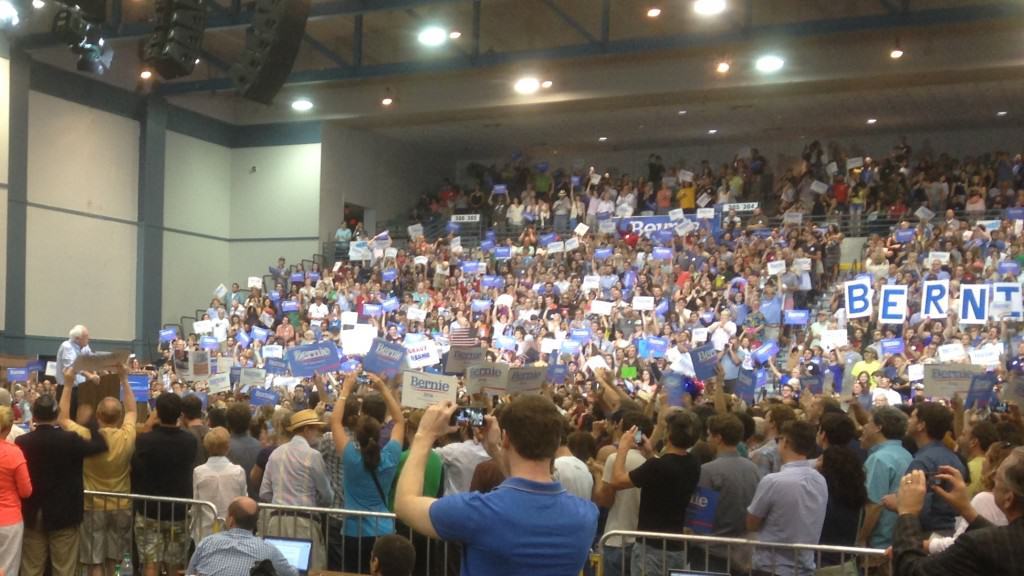Campaign Techniques
Politics / Campaigning February 8, 2016 admin 19
A campaign team (which may be as small as one inspired individual, or a heavily-resourced group of professionals) must consider how to communicate the message of the campaign, recruit volunteers, and raise money. Campaign advertising draws on techniques from commercial advertising and propaganda. The avenues available to political campaigns when distributing their messages is limited by the law, available resources, and the imagination of the campaigns’ participants. These techniques are often combined into a formal strategy known as the campaign plan. The plan takes account of a campaign’s goal, message, target audience, and resources available. The campaign will typically seek to identify supporters at the same time as getting its message across.
Campaign advertising
Campaign advertising is the use of paid media (newspapers, radio, television, etc.) to influence the decisions made for and by groups. These ads are designed by political consultants and the campaign’s staff.
Media management
The public media (in US parlance ‘free media’ or ‘earned media’) may run the story that someone is trying to get elected or to do something about such and such.
Mass meetings, rallies and protests
Holding protests, rallies and other similar public events (if enough people can be persuaded to come) may be a very effective campaign tool. Holding mass meetings with speakers is powerful as it shows visually, through the number of people in attendance, the support that the campaign has.
Modern technology and the internet
The internet is now a core element of modern political campaigns. Communication technologies such as e-mail, web sites, and podcasts for various forms of activism to enable faster communications by citizen movements and deliver a message to a large audience. These Internet technologies are used for cause-related fundraising, lobbying, volunteering, community building, and organizing. Individual political candidates are also using the internet to promote their election campaign.
Signifying the importance of internet political campaigning, Barack Obama’s presidential campaign relied heavily on social media, and new media channels to engage voters, recruit campaign volunteers, and raise campaign funds. The campaign brought the spotlight on the importance of using internet in new-age political campaigning by utilizing various forms of social media and new media (including Facebook, YouTube and a custom generated social engine) to reach new target populations. The campaign’s social website, my.BarackObama.com, utilized a low cost and efficient method of mobilizing voters and increasing participation among various voter populations. This new media was incredibly successful at reaching the younger population while helping all populations organize and promote action.
Husting
A husting, or the hustings, was originally a physical platform from which representatives presented their views or cast votes before a parliamentary or other election body. By metonymy, the term may now refer to any event, such as debates or speeches, during an election campaign where one or more of the representative candidates are present.
Other techniques
- Writing directly to members of the public (either via a professional marketing firm or, particularly on a small scale, by volunteers)
- By distributing leaflets or selling newspapers
- Through websites, online communities, and solicited or unsolicited bulk email
- Through a new technique known as Microtargeting that helps identify and target small demographic slices of voters
- Through a whistlestop tour – a series of brief appearances in several small towns
- Hampering the ability of political competitors to campaign, by such techniques as counter-rallies, picketing of rival parties’ meetings, or overwhelming rival candidates’ offices with mischievous phone calls (most political parties in representative democracies publicly distance themselves from such disruptive and morale-affecting tactics, with the exception of those parties self-identifying as activist
- Organizing political house parties
- Using endorsements of other celebrated party members to boost support (see coattail effect)
- Remaining close to or at home to make speeches to supporters who come to visit as part of a front porch campaign
- Vote-by-mail, previously known as ‘absentee ballots’ have grown significantly in importance as an election tool. Today, campaigns in most states must have a strategy in place to impact early voting
- Sale of official campaign merchandise (colloquially known as chum, in reference to the baiting technique) as a way of commuting a competitor’s popularity into campaign donations, volunteer recruitment, and free advertising
Corona: Denmark vs Sweden
Danish Politics Mar 14, 2020
Report From Kenyan Elections
Kenyan Politics Oct 27, 2017
Elections in the UK June8
UK Politics Apr 18, 2017
Trumps China Policy
Politics / Campaigning Mar 2, 2017
Get out and explore the world of politics, the cultures and the people. At Electomatic we recommend DoloTrip Travel Blog for exciting holiday inspiration and general travel news.

